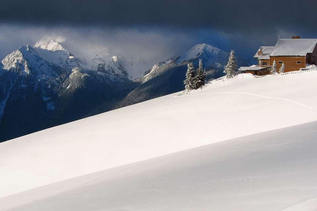In logging's heyday, whistle punks were men tasked with operating the signal that let other loggers know a log had been hooked up and was ready to be moved. Using interpretive signage, this trail illustrates what was like to be on a logging show, from the crew, to the cook, to camp. There are even some relics from the past, including a "sled", which is now quite hard to see, as well as some other metal artifacts.
The loop begins as a history lesson, and becomes a nature walk, allowing for 1.5 miles of pleasant, flat forest wandering. In 2018, WTA crews spent a day here working to clear years of felled trees, restoring the trail's ADA-accessibility.
From the large parking lot (with privy), set off down the wide gravel path. Just 0.2 miles down the trail, arrive at a junction. Turn right here -- first stop, the interpretive loop trail! Your first stop is the hard-to-see "sled", a large wooden structure that formed the base for logging machinery. Read the interpretive trail and then see if you can find the sled in the underbrush.
Continue on, walking past several other signs pointing out nearby artifacts and offering insight into the logging lifestyle. You'll know you've finished with the interpretive section when you arrive at another junction. To your left is a shortcut trail, which allows for a 0.75 mile loop. Or you can continue straight on for the full loop.
Now the trail becomes more of a nature walk. Weave among big trees, including Oregon ash and hemlock. Eventually, you'll pass a wetland and arrive at an observation deck. Trees have grown up, so there's not much to see, but the canopy overhead is impressive. Stay here for a while and listen to the birds.
Past the observation deck and continue down the way. The trail eventually spits you out on a service road. Amble down this for a short ways before turning left, leaving the Research Natural Area that began near the observation area, and heading down the wide path back to the trailhead.
WTA Pro Tip: If you still have energy and you're looking for a workout, walk down the road from the trailhead 0.2 miles and find the Pacific Crest Trail (PCT) heading north. You can follow this trail to Bunker Hill, a former fire lookout, and the high point in this area.







 Trailhead
Trailhead



